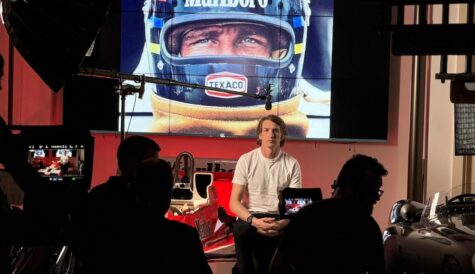Comment: Nick Price, managing partner, Bridge London on ad-funded programming
Advertiser funded programming (AFP) has been around since the dawn of commercial television and yet it is still something that, for a lot of people, remains a source of funding of last resort or a misunderstood goal.
It’s been talked about excessively as the future of entertainment but groundbreaking examples are difficult to find.
However, crucial changes are underway and the industry is moving, slowly, in the same direction. It is now only a matter of time before AFP moves confidently into the mainstream.
In the interim, intriguing opportunities are opening up. Broadcasters are increasingly having to think bigger with decreasing budgets, and many of the ideas that they are thinking bigger about do not necessarily lend themselves to international coproductions.
Brands can fill this gap by co-funding the idea in what can best described as domestic coproduction.
In this scenario everyone wins. Broadcasters get a show they really want at half the price and brands get most of the benefits of AFP for less money, while also having the comfort that the broadcaster is totally behind the idea.
The days when AFP used to be associated with second rate ‘free programming’ are now a thing of the past. Broadcasters and brands want shows that are commissionable and that rate.
For the first time terrestrials are opening up their primetime schedules to AFP – a clear statement of intent – and it will only be a matter of time before there is a hit show funded by a brand. When this happens there will be a tipping point.
The reality is that broadcasters have to find new ways in which to engage brands in a world where their spend is being increasingly diluted. Where once there were two or three commercial broadcasters now there are hundreds, and that’s before we even begin to factor in the impact of the internet.
It’s for this reason that AFP is so attractive – it works across multiple platforms, from television to podcast, mobile, online and IPTV, press tie-ins and in-store promotion. The ‘programme’ or entertainment part of the deal is really a carefully crafted hook that draws in a specific and large target audience and then involves them in other activity that will be of benefit to the brand.
So, what are the pitfalls? The old bugbear of matching media values to the cost of the programming – which when based purely on the value of the sponsorship boards rarely adds up – is slowly becoming a thing of the past.
Many brands now reject the media value argument in relation to AFP. They argue, quite rightly, that if they wanted media value they’d simply make an efficient media buy. Add this to the fact that agencies and broadcaster are all looking at new ways to place a value on AFP beyond the bumpers, and it becomes clear that the market is preparing to make this area truly viable for the first time.
Deals, however, remain difficult to get off the ground. This is principally due to the key players falling foul of inter-media misunderstandings, clashing processes and the involvement of far too many people in what is ultimately a creative process. In the case of AFP, the phrase ‘too many cooks spoil the broth’ was never truer.
New technologies like Sky+ are also playing a part. It is estimated that PVRs in the UK currently account for an estimated £40 million ($79m) worth of lost ad revenue. This figure will be closer to £1 billion when PVR penetration exceeds 50% of the population in 2012.
There is still a lot of debate about what the impact of this figure and the PVR will be, but in the meantime AFP is growing at a rate of 25% year on year. Broadcasters need it to support budgets and offer something new to brands as a way of retaining spend with their channel and many brands already view it as a vital form of communication to support their other marketing activities.
Branded entertainment is growing – fast. In a few years it will be so well established that no-one will think it any more unusual as a business model than the spot ad, sponsorship or co-production market that we’re so familiar with today.



